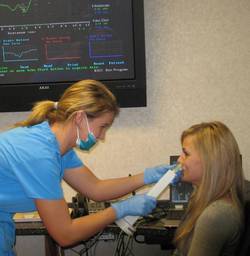Acoustic Rhinometry is mentioned as an objective measurement for functional rhinoplasty in the May 2017 issue and review by Facial Plastic Surgery Clinics of North America: Functional Rhinoplasty
Facial Plastic Surgery Clinics of North America: Functional Rhinoplasty
BC Marcus – 2017
Page 1. Clinics Review Articles FACIAL PLASTIC SURGERY CLINICS OF NORTH
AMERICA Functional Rhinoplasty EDITOR Benjamin C. Marcus CONSULTING
EDITOR J. Regan Thomas MAW 2017 Page 2. Facial Plastic …
Source: http://scholar.google.com


